A carrom board [4ft×4ft square] has the queen at the centre. The queen hit by the striker moves to the front edge, rebounds and goes into the hole behind the striking line. Then find the magnitude of displacement of the queen
From the centre of the front edge is 43√10ft
From the centre of the front edge is 23√10ft
From the front edge to the hole is 43√10ft
From centre to the hole is 2√2ft
The correct Answer is:B, C, D
Topper's Solved these Questions
- VECTORSBOOK - AAKASH SERIESCHAPTER - VECTORSEXERCISE - Additional Practice Exercise (Practice Sheet (Advanced)) (Linked Comprehension Type Questions)
2 Videos
- VECTORSBOOK - AAKASH SERIESCHAPTER - VECTORSEXERCISE - Additional Practice Exercise (Practice Sheet (Advanced)) (Integer Type Questions)
6 Videos
- VECTORSBOOK - AAKASH SERIESCHAPTER - VECTORSEXERCISE - Additional Practice Exercise (Level-II Lecture Sheet (Advanced)) (Integer Type Questions)
3 Videos
- UNITS AND MEASUREMENTS BOOK - AAKASH SERIESCHAPTER - UNITS AND MEASUREMENTS EXERCISE - ADDITIONAL PRACTICE EXERCISE (PRACTICE SHEET (ADVANCED))
14 Videos
- VISCOSITY BOOK - AAKASH SERIESCHAPTER - VISCOSITY EXERCISE - Questions for Descriptive Answers
3 Videos
Similar Questions
A carrom board 4ft×4ft□) has the queen at the centre. The queen hit by the striker moves to the front edge, rebounds and goes in te hole behind the striking line. Find the magnitude of displacement of the queen a. from the centre to the front edge b. from teh front edge to teh hole and c. from the centre to teh hole.
View SolutionA carrom board (4ft×4ft) has the queen at the centre. The queen hit by the striker moves to the front edge, rebounds and goes in the hole behind the striking line. Find the magnitude of displacement of the queen a. from the centre to the front edge b. from the front edge to the hole and c. from the centre to the hole.
View Solution
Knowledge Check
Consider a conducting circular loop placed in a magentic filed as shown. When magnetic field changes with time, magentic flux also changes and emf is induced.
e=−dϕdt
If resistance of loop is R then induced current.
i=eR
For Current, charge must have come into motion. Magnetic force cannot make the statinoary charges to move. Actually there is an induced electric field in the conductor caused by changing magnetic flux, which make the change to move
∫→E.d→l=e=−dϕdt
This induced electric field is non-electrostatic by nature. line integral of →E around a closed path is non-zero
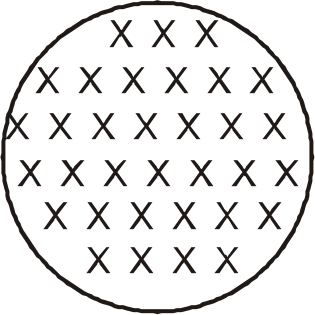
A square non- conducting loop 20 cm on a side is placed in a magnetic field The centre of side AB coincides with the centre of magnetic field The magnetic field is increasing at the rate of 2T/s. Find the magnitude of line integral of induced electric field along path BC.
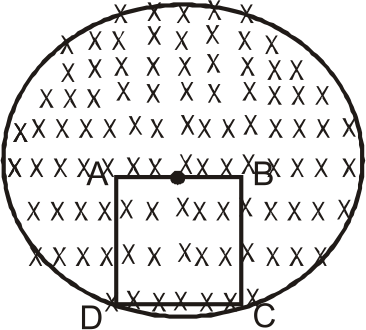 A10 mVB20 mVC30 mVDzero
A10 mVB20 mVC30 mVDzero
A queen is placed at the centre of carom-board which has side of length a . It is hit from a position with a striker such that after rebounding from the front end, it goes into the hole in the opposite end. Find the distance traveled by the queen
View SolutionA queen is placed at the centre of carom-board which has side of length a . It is hit from a position with a striker such that after rebounding from the front end, it goes into the hole in the opposite end. Find the distance traveled by the queen
View SolutionA mosquito net over a 7ft×4ft bed is 3fthigh. The net has a hole at one corner of the bed at origin through which a mosquito enters the net. It flies and sits at the diagonally opposite upper corner of the net (a) find the magnitude of the origin, the length of the bed as the x-axis, its width as the Y-axis, and vertically up as the Z-axis, write the displacement vector.
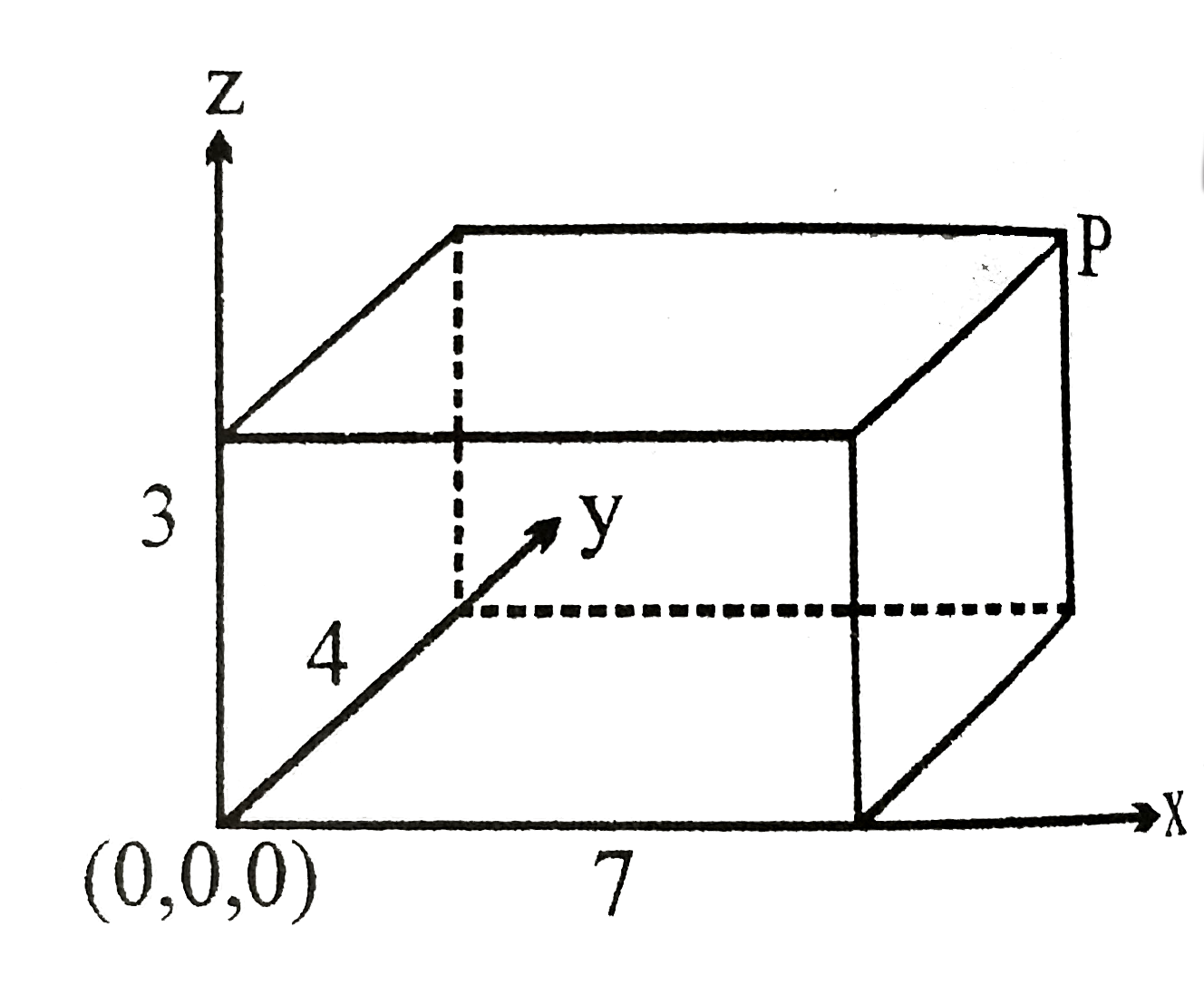
View SolutionA wedge of mass m and triangular cross- section (AB = BC = CA = 2R) is moving with a constant velocity −vˆI towards a sphere of radius R fixed on a smooth horizontal table as shown in figure. The wadge makes an elastic collision with the fixed sphere and returns along the same path without any rotaion. Neglect all friction and suppose that the wedge remains in contact with the sphere for a very shot time. Δt, during which the sphere exerts a constant force F on the wedge.
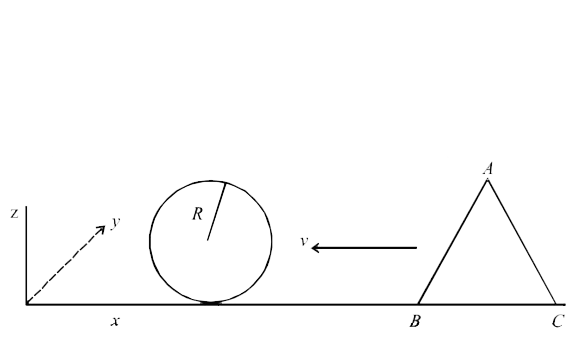
(a) Find the force F and also the normal force N exerted by the table on the wedge during the time Δt.
(b) Ler h denote the perpendicular distance between the centre of mass of the wedge and the line of action of F. Find the magnitude of the torque due to the normal force N about the centre of the wedge, during the interval Δt.
View SolutionA plank with a body of mass m places on it starts moving straight up according to the law y=a(1−cosωtt), whee y is the displacement from the initial position, ω=11s−1. Find :
(a) the time dependence of the force that the body exerts on the plank if a=4.0cm, plot this dependence,
(b) the minimum amplitude of oscillation of the plank atwhich the body starts falling behind the plank,
(c) the amplitude of oscillation of the plank at which the body springs up to a height h=50cm relative to the initial position (at the moment t=0).
View SolutionOn a smooth carrom board. A coin located at (4,6) is moving in negative y−direction with speed 3m/s is being hit at that point by a striker moving along negative x− axis . The line joining centre of the coin and striker just before the collision is parallel to x− axis. After collision the coin goes into the hole located at origin. Mass of the striker and the coin is equal. Considering the collision to be elastic, find the velocity ( in vector form ) of the stricker before the collision and after the collision.
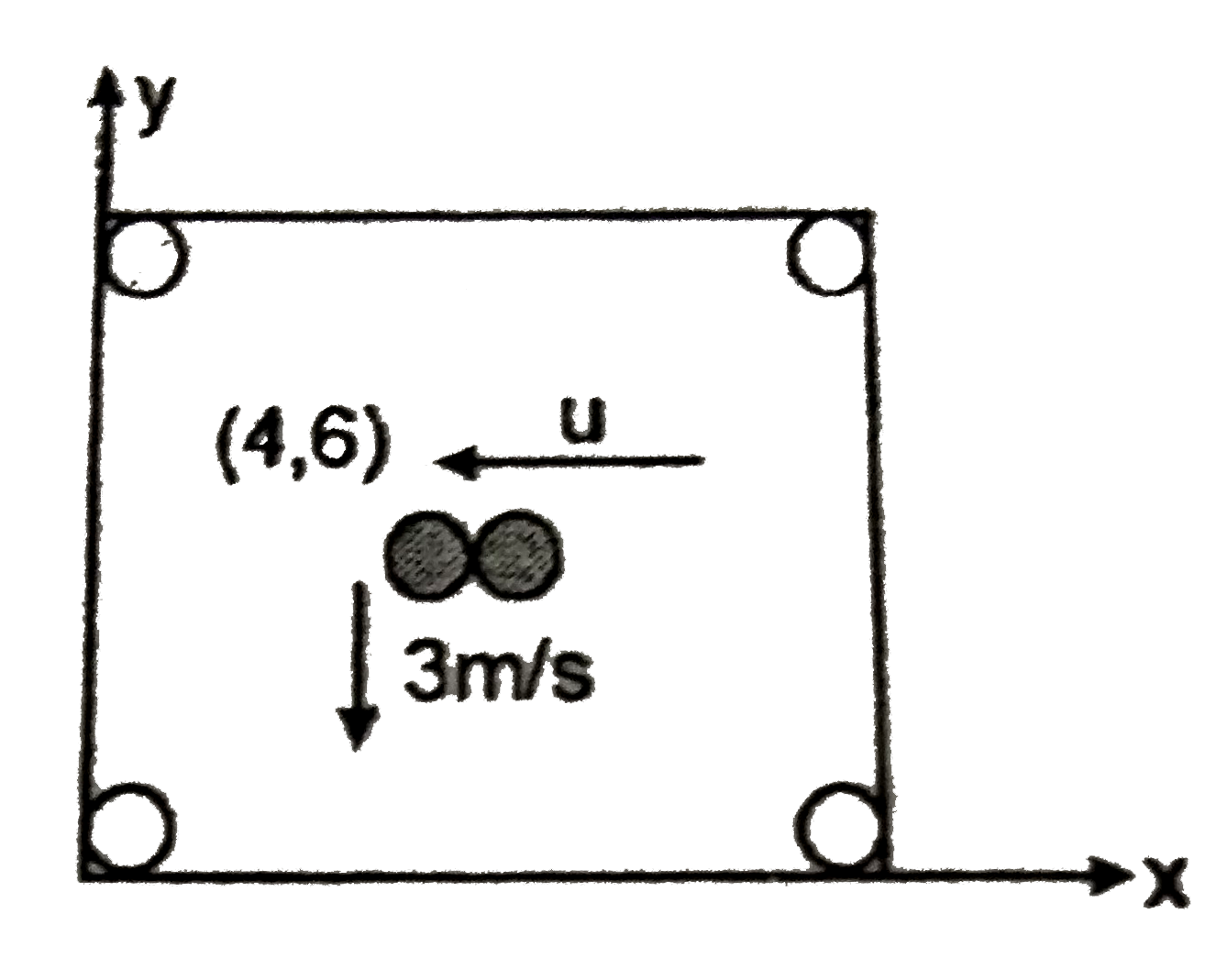
View SolutionOn a smooth carrom board. A coin located at (4,6) is moving in negative y−direction with speed 3m/s is being hit at that point by a striker moving along negative x− axis . The line joining centre of the coin and striker just before the collision is parallel to x− axis. After collision the coin goes into the hole located at origin. Mass of the striker and the coin is equal. Considering the collision to be elastic, find the velocity ( in vector form ) of the stricker before the collision and after the collision.

View Solution
